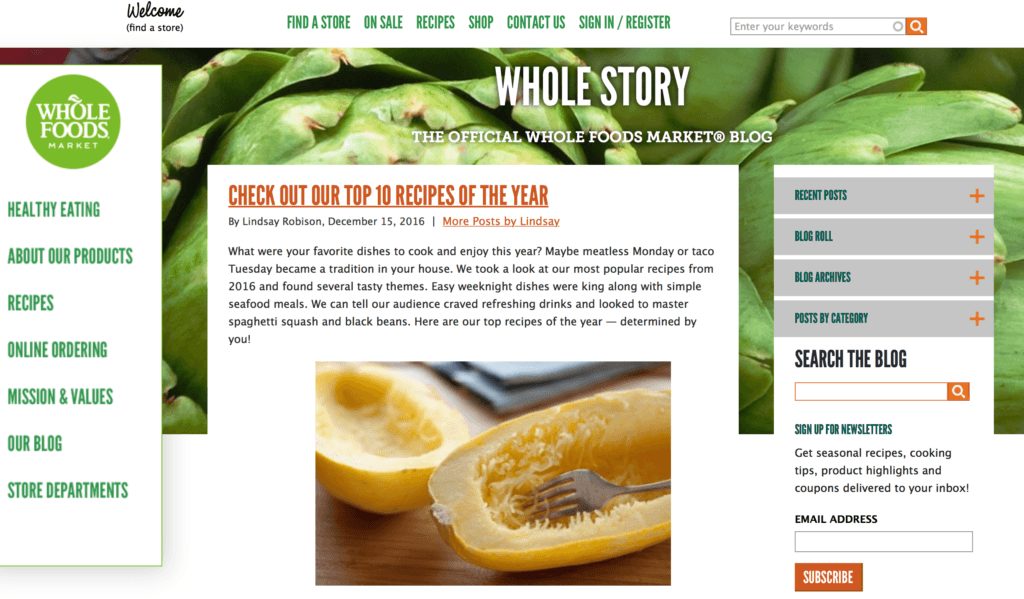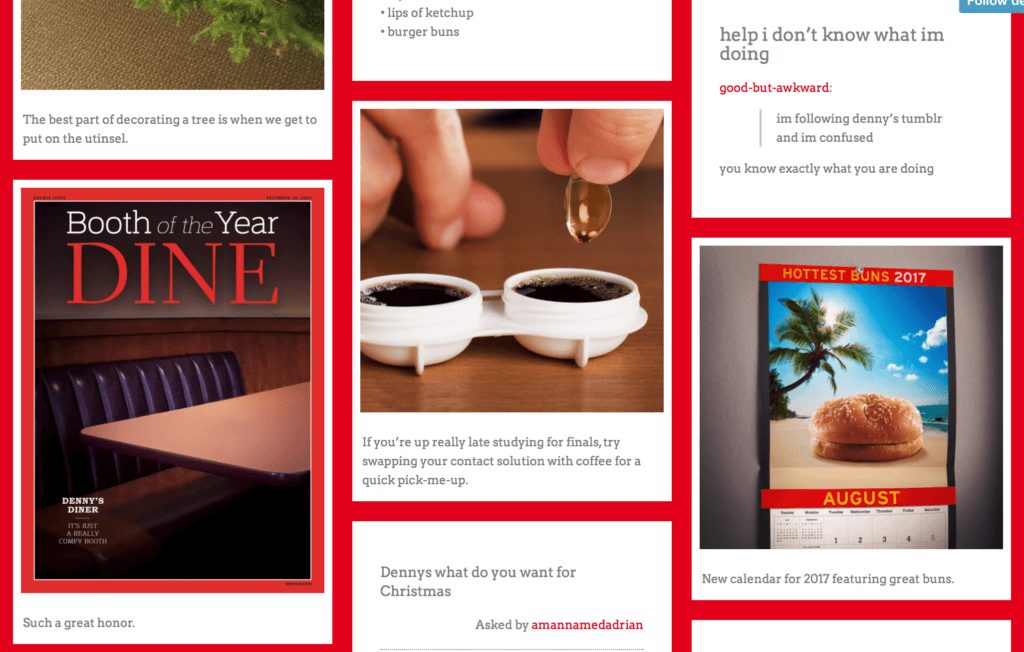When Apple released its iPhone7 in San Francisco, the internet was rightfully captivated (this was the first time the brand revealed it had removed the headphone jack, after all). And then Denny’s swooped in with its take on the announcement, tweeting: “true innovation would have been replacing the headphone jack with a flapjack,” along with a gif of a pancake being plunked atop an iPhone. That’s just one example of restaurant content marketing.
Like it or not, the power of dissemination once held only by major media outlets is now in the hands of anyone with a Twitter account. For modern brands, this notion is a little scary. One false tweet about a food safety scandal could send a restaurant chain’s stock tumbling in seconds, but it also means positive messages are easier to get across than ever before.
Enter content marketing, a technique of producing valuable, relevant, and consistent content, tailored to a specific audience. For a restaurant, effective content marketing translates to higher traffic, sales, and repeat customers — that is, if it’s done correctly.
What’s the big deal with content marketing?
Not only does valuable content help attract and retain a clearly-defined audience, but it also increases the overall value of a brand.
The stats are pretty compelling:
- 70% of people prefer to learn about products through content rather than traditional advertisements
- The average business spends 9.4% of its marketing budget on social media. That number is expected to grow to 13.2% over the next year, and to 21.4% over the next five years.
- Marketers who prioritize blogging are 13x more likely to achieve a positive ROI
- Companies that blog have 55% more mobile visitors than those who do not
So… you’re saying I should start a blog?
Not necessarily. Producing content for content’s sake isn’t a good strategy. But neither is relying on press releases and updates. Marketing has changed, and so has the modern restaurant guest. Today’s customer doesn’t want to be talked to; he wants to be engaged in conversation.
That makes restaurant content marketing especially important. It’s no longer enough to position a restaurant chain within a category. Now, it must be positioned within consumer culture. Just look at Chipotle. While the chain has admittedly fallen on hard times, it still has a unique personality and knows how to engage its audience. On the opposite end of the spectrum? Brands that don’t produce solid, engaging content and often wind up lost in a sea of lookalikes.
What are some examples of foodservice brands with solid content strategies?
Whole Foods
The organic grocer has established itself as a brand with high standards, a focus on sustainability, and a leader in organic foods. The Whole Foods blog perfectly captures all of the above, offering recipes, tips, and trend forecasts.

Denny’s
The content produced by Denny’s is all about snark — which is sort of what you expect from a 24-hour diner. But instead of coming from a snarky waitress named Flo, Denny’s personality comes courtesy of its social channels. The brand’s Tumblr is a cornucopia of weird, off-the-wall comments and memes — and it totally works. In fact, a New York college student loved the chain’s marketing so much he petitioned the company for an internship.

What are some of the challenges of formulating a solid content strategy?
Content marketing requires a journalistic sensibility that ensures a brand is continuously feeding its audience. Breaking news (or, for a brand, a big marketing campaign) might be impactful, but to ensure the audience sticks around for it, you’ve got to produce thoughtful content on a regular basis. For restaurants, that means formulating a plan (in newsroom terms, an editorial calendar) outlining the brand story, the frequency of the content, etc.
There’s no one-size-fits-all template for effective content marketing: What works for Whole Foods wouldn’t work for Denny’s, and vice versa. Hence the importance of strategy. Challenges, budgets, goals, risks, buyer personas — these should all be mapped out.
In short, doing it right isn’t an easy task, but it is beneficial. Guests visit a restaurant so they can eat food, sure, but they want the food to be tasty and the experience to be worthwhile. In the same way, customers who visit a brand’s website or social channels should come away feeling like the experience resonated; that it was worthwhile enough to visit again and again.
